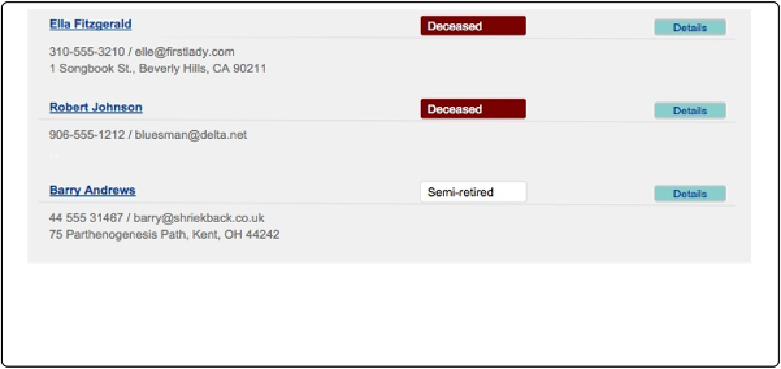Database Reference
In-Depth Information
Now if you switch to Browse mode, you see that the mysterious commas have disappeared.
See
Figure 15-14
for proof. This technique of hiding things is common among advanced
FileMaker developers, because it helps build data-rich layouts with less clutter.
Figure 15-14. Using conditional formatting, you can “hide” text on the layout under certain condi-
tions. Just make it turn white (or whatever your background color is). Compare this picture with
Figure 15-13—no more stray commas!
Advanced Conditional Formatting
In both of the previous examples, you added only one condition to the list in the Conditional
Formatting dialog box. But it isn't a list if you can't add more than one. When you do,
FileMaker looks at every condition on the list and makes the formatting changes for each one
that applies. As a result, you can easily create several different formats for several different
conditions. For example, you can make numbers in your budget database turn red when
you're getting behind, stay black when you're right on target, and turn green when you're
beating expectations.
Two matching conditions can even have competing formatting rules. For instance, you can
set the text color to something different in each rule, even though they both apply to the same
values. In that case, FileMaker chooses the format from the condition that comes
last
in the
list. You can move these conditions around using their little arrows to influence its decision.
Just put the condition that should take precedence lower in the list.
Also, in the Conditional Formatting dialog box, if you don't see the formatting choice you
want, just click More Formatting, and chances are you'll find what you want. This button
opens a dialog box that lets you adjust additional formatting, including font, size, and a few
extra styles.

